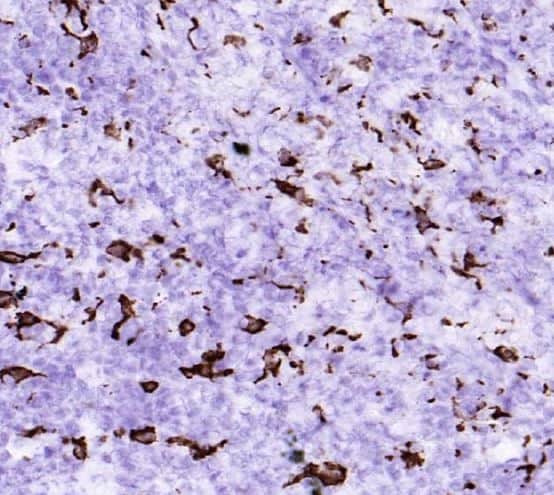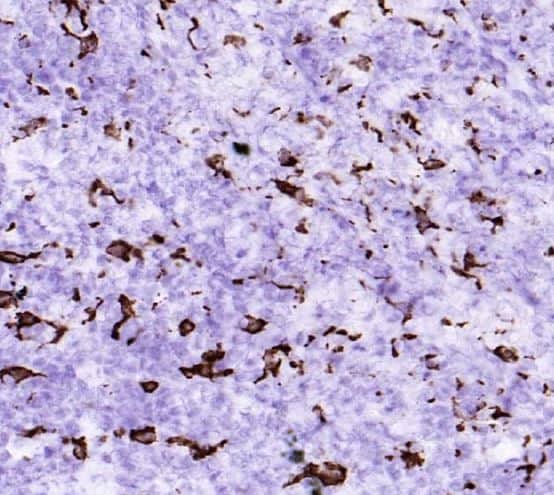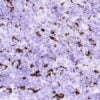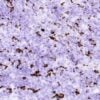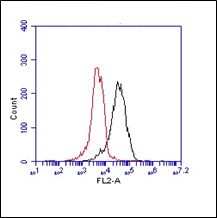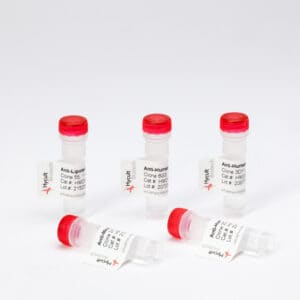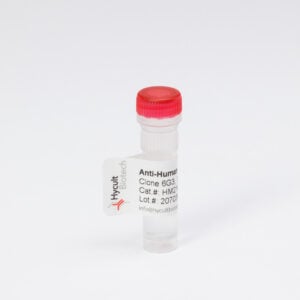CD163, Human, mAb RM3/1
€133.00 – €456.00
The monoclonal antibody RM3/1 recognizes CD163, a 130 kDa type I membrane glycoprotein, which is expressed exclusively in the monocyte/macrophage system. CD163 is a member of the cysteine-rich scavenger receptor superfamily. CD163 is an acute phase regulated receptor for the hemoglobin-haptoglobin complex. Another important function of CD163 seems to be in the adhesion of monocytes to activated endothelial cells. The expression levels of CD163 vary during the course of macrophage differentiation. The highest levels are found on tissue macrophages whereas bone marrow-derived cells are CD163 negative. CD163 positive cells include skin histiocytes, gut, Kupffer cells, and macrophages in spleen, thymus placenta and inflamed or tumorous tissues. The protein expression is markedly induced by glucocorticoids, IL-6 and IL-10 while down-regulated by cyclosporin A and by phorbol esters.
CD163 can be cleaved to release to soluble form (sCD163). PMA can induce the shedding of sCD163. Intravenous lipopolysaccharide (LPS) produces a rapid rise of sCD163 in plasma of patient as it induces metalloproteinase-mediated shedding from monocytes surface. sCD163 in plasma is a parameter in diseases affecting macrophage function and monocyte/macrophage load in the body. The concentration of sCD163 is probably reflecting the number of macrophages of the ‘alternative macrophage activation’ phenotype with a high CD163 expression playing a major role in dampening the inflammatory response and scavenging components of damaged cells. As such sCD163 can be important as a disease marker in inflammatory conditions e.g. infection, autoimmune disease, transplantation, atherosclerosis and cancer.
The monoclonal antibody RM3/1 can be used for macrophage phenotyping..The RM3/1 antigen expression is restricted to human monocytes and macrophages that evolve in the late phase of inflammation, predominantly macrophages of healing tissue. For macrophages in the synovialis of patients with rheumatoid arthritis; in alveolar macrophages and in Kupffer cells a double staining can be observed with the monoclonal antibody 25F9 (HM2158) recognizing- mature macrophages, which is not the case in other tissues.
FS: Reduction of CD69 expression by adding 2.5 µg/ml RM3/1 to 5x105 human T-lymfocytes in presence of exogenous CD163 (Ref 2).
IF: Transfected CHO-cells were plated on coverslips and fixed in 4% paraformaldehyde for 2';. Cells were stained with 4 µg/ml RM3/1 for 60'.
IP: 10 µg RM3/1 was covalently coupled to beads (with 20 mM dimethyl pimelimidate), blocked with 0.2 M glycine buffer for 2 hr and incubated with cell lysate for 2 hr (Ref 5).
W: SDS-PAGE under non-denatured condition. Block blot with 1% skimmed milk for 1h and incubate with RM3/1 (0.4 µg/ml) in 0.1%BSA/TBS for 1h. Detection of ~130 kDa product in spleens extracted in presence of NP-40 or in glucocorticoid-treated human monocytes. (Ref 2,5)
